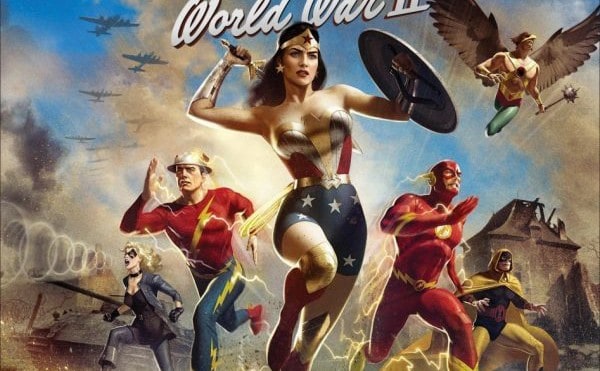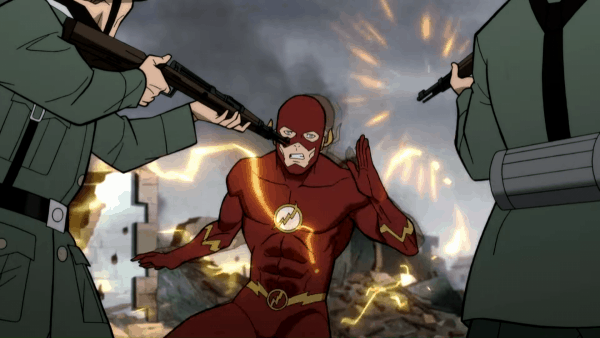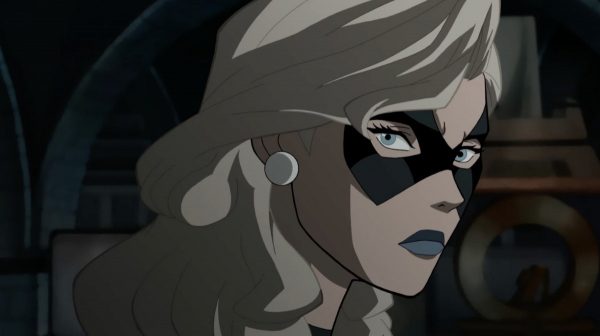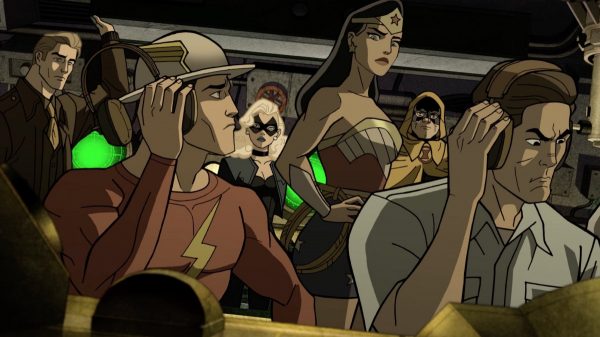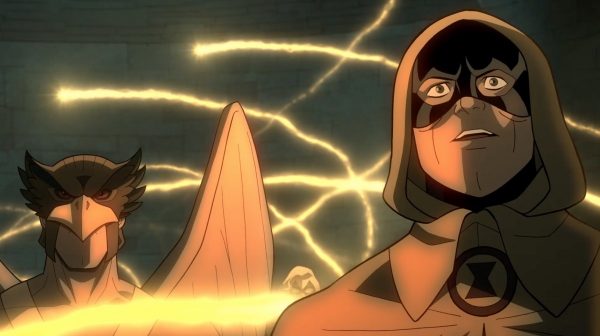Ricky Church chats with Justice Society: World War II director Jeff Wamester…
Though the Justice League consists of some of the most popular superheroes in comics and has been around for decades, they are not the first superhero team in either the DC Universe or the comic book industry. In 1940 the world was introduced to the Justice Society of America, a group of heroes made up of those with superpowers, scientists or highly skilled people who went on adventures, fought supervillains and even took part in World War II, fighting for the Allies against Nazi Germany and members of the Axis.
The original line-up included characters like Jay Garrick and Alan Scott, the original Flash and Green Lantern respectively, Hourman, Doctor Fate and Hawkman with Wonder Woman and Black Canary being added to the team later. While the Justice Society may not be as popular as the Justice League now, the JSA was a pretty big title for several years after its creation and remains a favourite among fans, so much so when DC wiped away the JSA out of continuity in their 2011 reboot many fans cried foul.
In a few weeks the Justice Society will receive their first feature length animated adventure Justice Society: World War II, the latest film in DC’s line of original animated movies. It follows Barry Allen’s Flash as he accidentally travels back in time, landing in Nazi-occupied France and meets the Justice Society, a team of secret superheroes led by Wonder Woman. Flash teams up with them to uncover the Nazis’ latest scheme and find a way to travel back to his time. We got to chat with the director of the film Jeff Wamester, who has worked on several DC animated films such as Wonder Woman: Bloodlines, Superman: Man of Tomorrow and Batman: Soul of the Dragon as a storyboard artist. He also directed several episodes of the Guardians of the Galaxy animated series, but Justice Society: World War II is his feature length directorial debut. We chatted about the film’s WWII setting, bringing the JSA to life in their first animated film, the blend of dramatic moments with superhero action and the process of animating so many characters with such a varied group of powers. Check out our interview below…
Ricky Church: You’ve worked on several DC films in the past, but this is the first one you have directed yourself. What was it about Justice Society: World War II that made you want to direct it?
Jeff Wamester: First off my grandfather was a World War II veteran and I was always fascinated by all the medals and all this stuff that he still had stored at my grandmother’s. I was always fascinated by that time period. Also I used to watch old black and white movies with my mom all the time. Like that’s all she had on, she didn’t watch any of the new stuff. She would just watch, all the time, different kinds of black and white movies and I loved watching them with her because they were always, sometimes they were a little boring because they were a little melodramatic, but other ones I always thought was really fascinating because they were very unusual. A lot of them had a very unusual point of view. It’s very inspiring to be able to express all of that stuff that I grew up with, which is comic books and movies.
Awesome. Now the movie features characters from the first generation of Golden Age superheroes. Was that intimidating coming into, to say ‘we’re doing a movie with the original Flash, Hourman, Hawkman’ and all the rest?
No, it was super exciting. We haven’t seen them on film very much at all and the chance for us to put that first stamp on them in the process, I always love the challenge of doing something like that. I was super excited to do it.
As you just mentioned, we haven’t really seen these characters a whole lot on film before. The three biggest heroes from that era are definitely Batman, Superman and Wonder Woman, but the JSA still have a strong fan base and are popular even now. They’ve gotten a bit of a resurgence thanks to like their appearances in shows like Smallville, The Flash and Stargirl. What’s it like for you to add to their modern adventures?
That’s a lot of fun. A lot of fun. Plus in this particular movie we got a chance to actually give them mini storylines through that. We got to show who they were, the decisions they make under stress and under the kind of situation they were in. They actually have their own story.
Yeah, for sure. I really enjoyed all the little quieter character moments in the film. Particularly with Black Canary and Hawkman, I thought those scenes were really done well mixed in with all the action. I thought that was great.
Yeah. We really wanted to give some of the people some breathing room so that they enjoy how they feel about each other. This is a team. They have feelings and they have lives within their group, not just what they’re dealing with outside of them.
One of the aspects of the movie I really enjoyed was the animation. I thought it was really well done throughout the whole thing, particularly with Flash, Wonder Woman and Black Canary when they displayed their powers. Can you talk about the process of animating those fight scenes and in the quieter character moments with their expressions?
Well, I think I’ll start with the quieter moments. I think it’s important to give these characters some pause and some moments for the audience to enjoy and at least experience what they’re experiencing. I’ve worked on TV series where we’re kind of just moving from point to point to point to point and we’re just giving the evidence of where they are versus actually having the audience empathize with these characters. Having the audience actually feel and be able to relate to them for a few seconds, being able to actually feel what they feel versus just moving on I think was really important in this movie. We’re giving them each a story and audiences really enjoy that.
I think for the action sequences, it was incredibly fun to kind of define how each character reacts to the world around them. We have this inner world and outer world that we got to enjoy. The inner one is expressing in the movie and the outer one is, like a good example is Hourman and showing how a little bit crazy he was in some spots. He’s taking a drug and that’s got to affect you at some level. It’s going to give you a problem and being able to show that once in a while he’s kind of smiling a little bit at the beat downs on some of these guys, you’re like ‘Ooh, he’s got a little bit of Jekyll and Hyde in him’. Each one of these characters have that. And then the Black Canary scene at the end, seeing just her power was really fun. It was fun because we got to show her range as well as how they felt about that.
Yeah, really cool. Now obviously war, especially one like World War II, is a sensitive and heavy topic. You yourself said that your grandfather was a veteran. How do you balance the seriousness of the drama of something like that with the superhero spectacle?
I think it’s super important. The best way is always take it seriously. People died. People had huge moments in their lives that affected them to this day if they’re still alive. I think, you know, growing up seeing grandparents and relatives and friends who had parents and grandparents that had that same kind of feeling, you realize that you can’t just treat it like a prop. I think when we had walked into this, me and Butch [Lukic, supervising producer] never wanted to treat it like a prop. As long as you don’t treat it like a prop and you always keep in mind that it was real and that the things happening were real, we all still have that setting because the characters need to react to that same setting in an honest way.
Yeah, for sure. Now you’re no stranger to big ensemble pieces after your other DC work as well as your work on the Guardians of the Galaxy series. How difficult is it to animate so many different heroes and different powers in a single scene or throughout the movie?
It’s very difficult. It’s something you always have to keep in mind with every scene because you always have, you don’t want a thousand characters using all their powers. It would become impossible for us to address properly. It comes from A) from the characters, making sure that each character has a storyline so that when we do cut them, it has a real reason to be there. You can never not have a reason to be there. If you have a story for each character and they’re either changing or not changing, but you see why they’re motivated, you see their inner and outer worlds, it makes it much easier to come into them close and know when to move in and out. I think that’s the most important thing when you’re addressing it. If we have an ensemble piece to make sure that each character has their time so then when it does come together and we have those huge scenes, it’ll work.
Do you have a favourite JSA member? If so, who and why?
I’ll go the obvious and not so obvious. I’ll give you two. So I think the character individually I enjoyed the most is probably Black Canary only because she had a really good story I think in this. You’re able to really add some subtext for her story. I always love doing a Wonder Woman story. I just really enjoy having her kick-butt through the whole thing, but also have this struggle. I also really enjoyed Hourman, showing the crazy on him was a blast.
Thank you very much to Jeff Wamester for speaking with us!
SEE ALSO: Check out all of our Justice Society: World War II interviews here
Justice Society: World War II will be released on digital April 27th and Blu-ray May 11th.
Ricky Church – Follow me on Twitter for more movie news and nerd talk.
